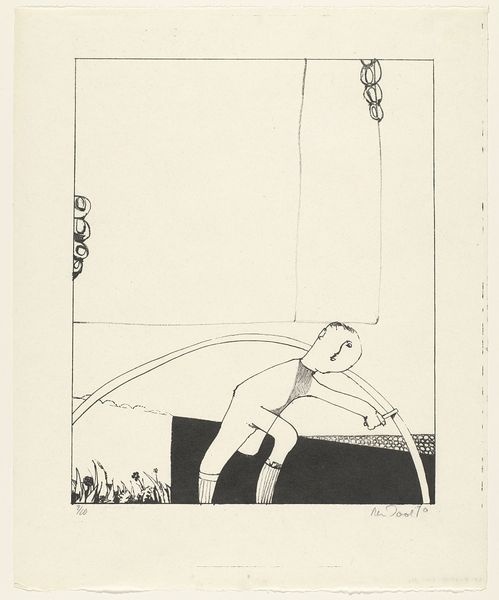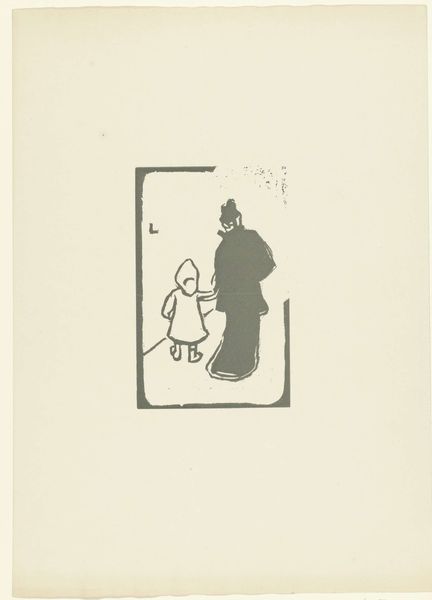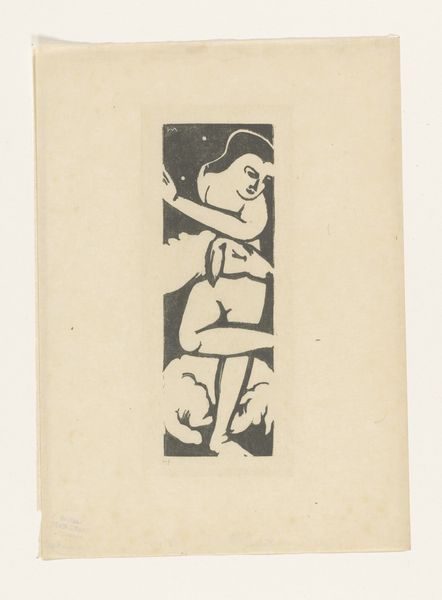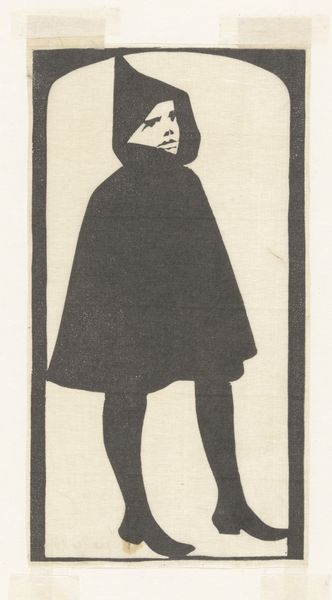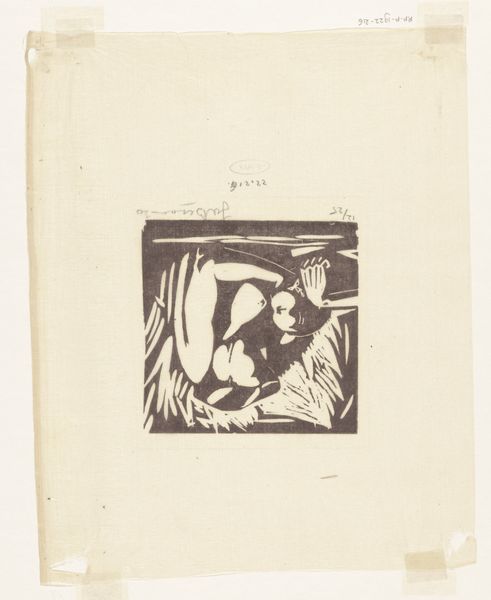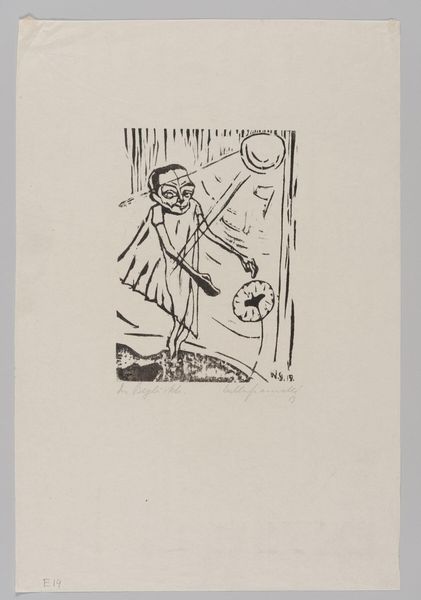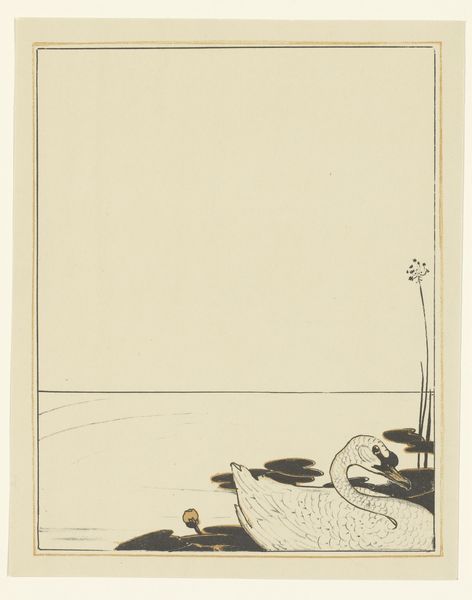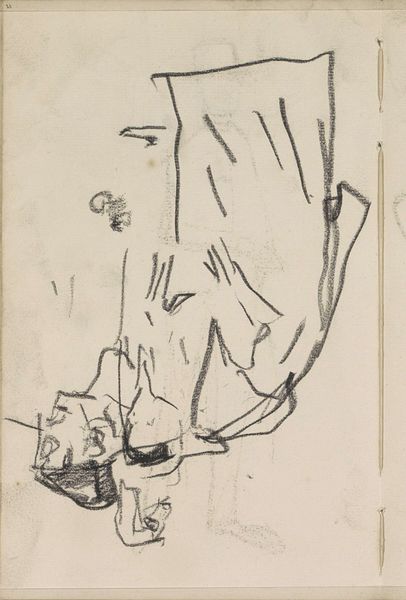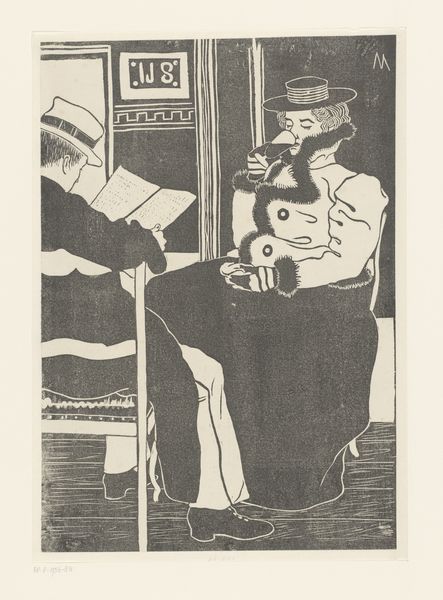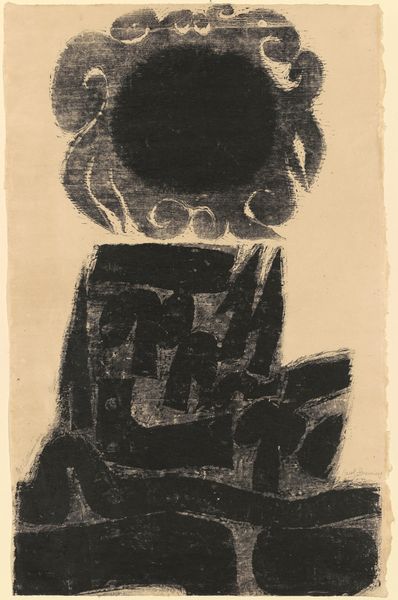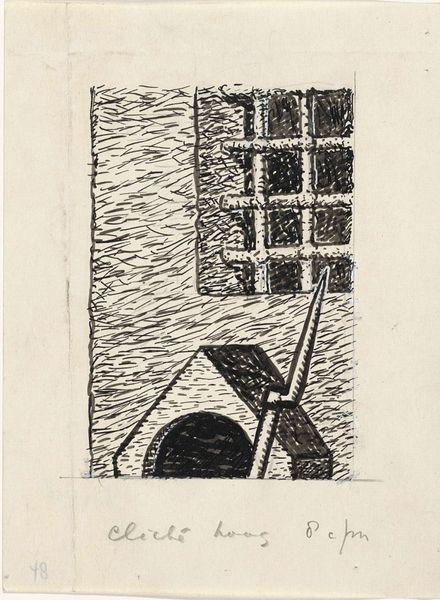
drawing, pencil, pen
#
drawing
#
street-art
#
landscape
#
figuration
#
pencil
#
pen
#
street
Dimensions: height 168 mm, width 75 mm
Copyright: Rijks Museum: Open Domain
Curator: Here we have "Zittende jongen op een stoep," or "Sitting Boy on a Sidewalk," a drawing rendered in pencil and pen, created sometime between 1900 and 1930 by Elly Verstijnen. Editor: It evokes a feeling of quiet melancholy, wouldn't you agree? The stark contrasts emphasize the isolation of the figure, dwarfed by the architectural elements. Curator: Precisely. The artist uses a limited tonal range to structure the composition. Notice how the verticality of the window echoes the boy’s posture, framing his despondency. The use of line is key to create both structure and an almost palpable sense of atmosphere. Editor: I'm drawn to the roughness of the materials--the way the pencil lines render the texture of the brick and cobblestone. This invites a material reading: it begs the question of whether this depicts the impact of urban industrialization on children. How many anonymous boys were working-class? Where are his parents, who is profiting? Curator: While a socio-economic interpretation certainly adds another layer of meaning, I'm most interested in how Verstijnen plays with perspective and proportion. The oversized hat, the hunched shoulders – it creates a potent visual symbol of youthful vulnerability. Editor: Yes, and that vulnerability is compounded by the evident lack of material comforts--consider what the sidewalks looked like, the labor necessary for even basic drawings like these, then. These choices can allow for critical engagement by asking if such labor conditions led to material or economic advantages for any in Verstijnen’s social circle. Curator: A valid point, yet I cannot help but also consider how this composition reflects art historical tropes of representing childhood, and invites comparison between other Symbolist or Expressionist representations of such figures. Editor: Perhaps this highlights how formalism and material analysis need not be mutually exclusive frameworks, even as we find ourselves circling different entry points. I’m leaving here today also thinking of art and class struggle during those times, and feeling empathy toward both artist and model.
Comments
No comments
Be the first to comment and join the conversation on the ultimate creative platform.
